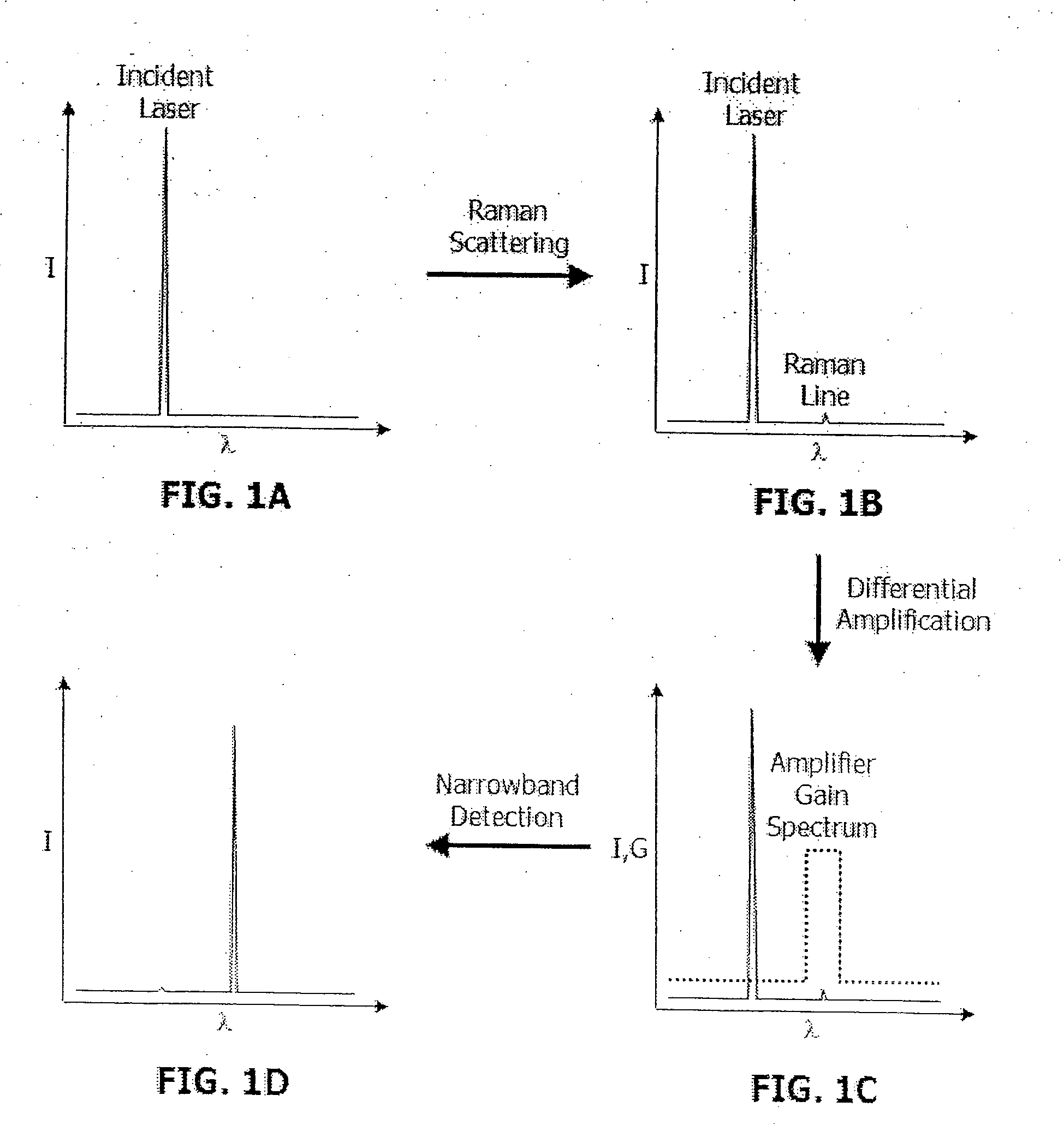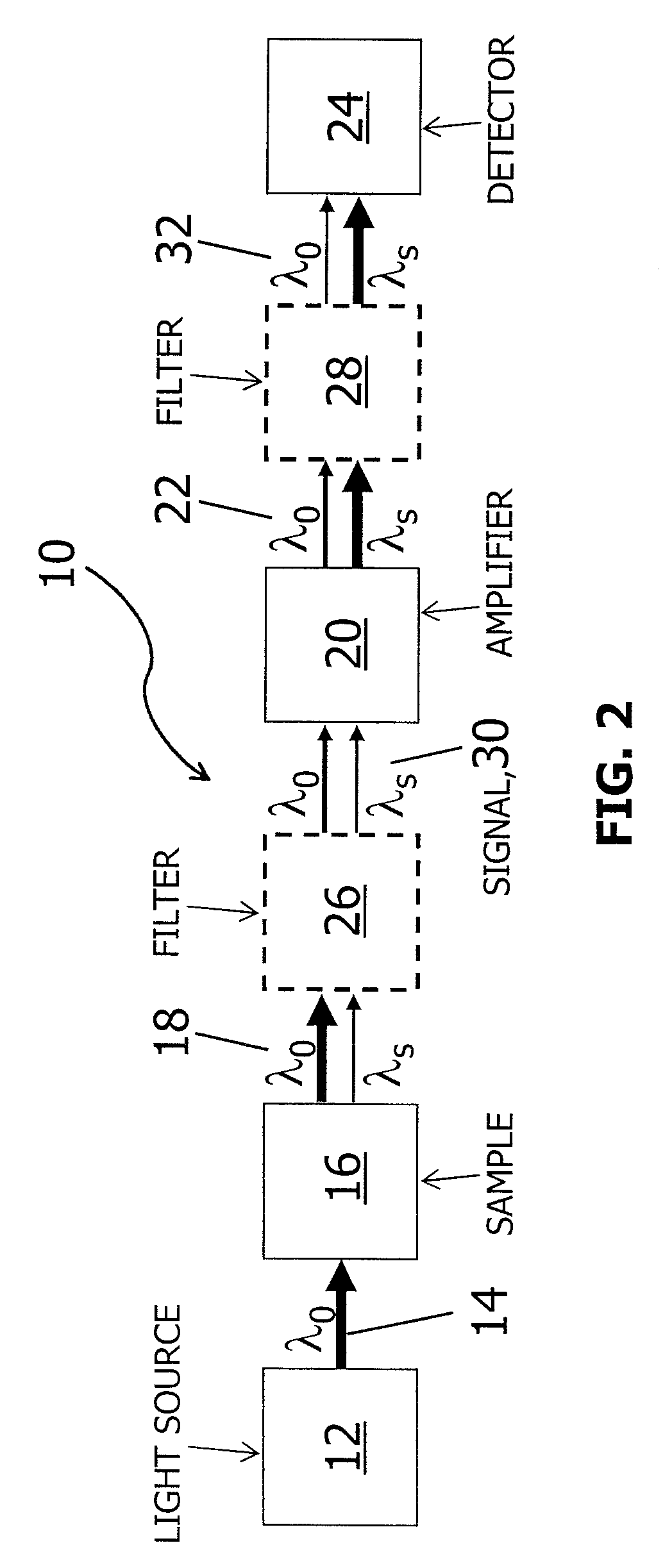Raman spectrometer having wavelength-selective optical amplification
a wavelength-selective optical amplification and spectrometer technology, applied in the field oframan spectroscopy, can solve the problems of limiting the performance of respective equipment, affecting the application of practical devices, and affecting the detection accuracy of the spectrometer, so as to reduce the heating/degradation of samples, reduce the cost, and improve the detection accuracy
- Summary
- Abstract
- Description
- Claims
- Application Information
AI Technical Summary
Benefits of technology
Problems solved by technology
Method used
Image
Examples
Embodiment Construction
[0025]Briefly, the present invention includes an apparatus and method for obtaining Raman spectra that are suitable for continuous real-time monitoring, utilizing the basic technique of Raman spectroscopy in cooperation with wavelength-selective optical amplification. The present apparatus lends itself to miniaturization to enable portability, and relies on existing off-the-shelf components and mature fiber-optic and laser technology to reduce cost and increase reliability. The invention improves the detection sensitivity of conventional Raman spectroscopy by orders of magnitude by utilizing wavelength-selective optical amplification. It is expected that the detection sensitivity is such that the apparatus of the present invention may be used for the rapid detection and identification of solid residues of explosives at remote distances up to 100 m, for real-time monitoring of airborne endospores such as anthrax, and for monitoring a variety of target molecules that have characterist...
PUM
 Login to View More
Login to View More Abstract
Description
Claims
Application Information
 Login to View More
Login to View More - R&D
- Intellectual Property
- Life Sciences
- Materials
- Tech Scout
- Unparalleled Data Quality
- Higher Quality Content
- 60% Fewer Hallucinations
Browse by: Latest US Patents, China's latest patents, Technical Efficacy Thesaurus, Application Domain, Technology Topic, Popular Technical Reports.
© 2025 PatSnap. All rights reserved.Legal|Privacy policy|Modern Slavery Act Transparency Statement|Sitemap|About US| Contact US: help@patsnap.com



